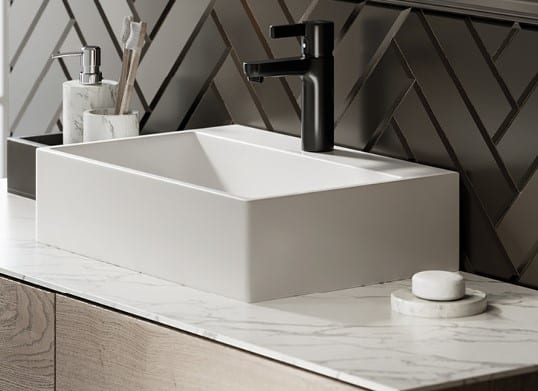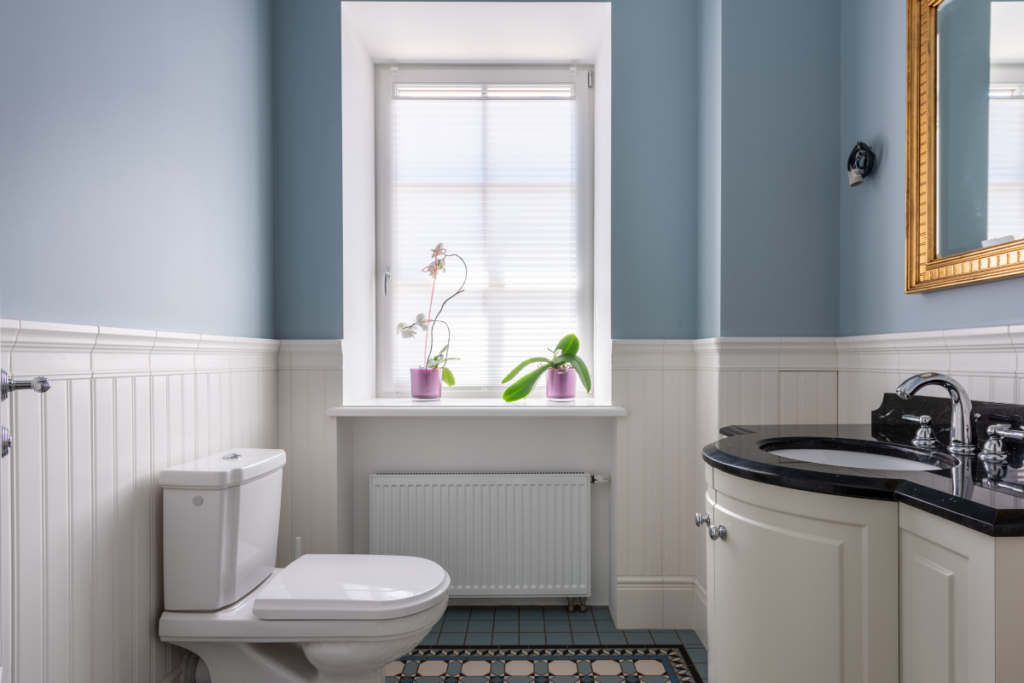Where Does Sink Water Go in Your House (Kitchen and Bathroom – 2 Main Routes Explained!)
Whether you’re washing dishes, washing your hands, or washing your dog, you’re probably not putting much thought into the water that’s going down your drain. Have you ever stopped to ask yourself, “Where does sink water go?”
When water goes down the sink drain, it will enter the municipal sewer line or your backyard septic tank. Municipal water travels to the city’s waste treatment plant where it is cleaned and reused. If you have a septic system, the water will enter your tank and eventually seep into the soil. Grey water may also be recycled for use in toilets.
Keep reading to learn more about both sewage and septic systems, including what happens to the water once it goes down your drain and how to tell which you have.
Where does my sink water go?
Water from faucets – typically bathroom and kitchen – makes up about 20% of each household’s daily water use. When you consider that it’s not uncommon for this water to pass from faucet to drain with very little use, you may begin to wonder what exactly happens to that water once it hits your pipes.

Sink water typically goes down the drain and exits your home. Depending on where you live, it may be destined for one of two endpoints:
- Sewer line
- Septic tank
When it goes down the drain, water first passes through a p-trap, preventing gas backflow before entering your main drain line.
Homes and businesses that are trying to conserve water may install a greywater system to recycle any relatively clean water for use in the toilet.
Overall, what happens to your sink water depends on where your home is located.
Most businesses and homes within city limits are connected to the municipal sewer line. In that case, gravity will push the water down the drain into a Private Sewer Lateral (PSL), which delivers your house wastewater into the municipal mainline and on to wastewater treatment facilities such as a wastewater treatment plant to remove pollutants, and improve the water quality.
However, homes that are farther away from the city center are more likely to have an individual septic system.
Note, however, that the septic tank and the sewer are not the ultimate destinations of waste sink water. Both of these are simply the basic ways in which water is cleaned and then returned to use, either through the water treatment system or the environment.
It also doesn’t matter if it’s sink water, shower water, or toilet water, as all drains in your home have the same destination.
Sewer line
If you live in a town where you depend on the municipal water supply and wastewater discharge, your water drains (including the sink) empty into the sewer line.
Once the water from your sink exits your drain line, it will join all the wastewater from your neighborhood and head through the city pipes toward the water treatment facility where it will undergo three levels of treatment before being returned to the water line:
- Primary treatment – Removal of large debris
- Secondary treatment – Removal of remaining solids, biological treatment, and disinfection
- Advanced treatment – Chemical treatment to make the water drinkable
Once the wastewater has passed through the entire municipal water treatment system, it is ready to be returned to your home as clean water.
Primary treatment
According to the EPA, the first round of water treatment is considered pollution control as it removes large items that ideally shouldn’t have entered the wastewater system at all.
In the primary treatment phase, wastewater goes through a physical screening process to eliminate large particles. That includes non-dissolving items like nappies, wet wipes, and sanitary towels, among other large objects. After getting rid of the larger particles, wastewater goes to the secondary treatment.
Top tip: Even if the packaging says it flushable, but it’s not safe for your pipes or the sewage system. Even if it doesn’t cause an immediate clog, it’ll affect your water bill!
Secondary treatment
The secondary treatment stage is probably the one most of us think about when it comes to wastewater treatment.
The secondary round of water treatment involves:
- Solids removal – Sewage water takes time to rest and settle. In doing this, all the large solids sink at the bottom and mainly at the center. With the help of rotating treatment arms, the particles sediment further before the liquid part moves to the next stage.
- Biological treatment – Any remaining solids will be subjected to a biological treatment process. In this stage, live bacteria digest the remaining solids.
- Disinfection stage – After the bacterial digestion of organic matter, the wastewater goes through a chlorination stage. Here, chlorine disinfects the water to make it cleaner and safer. Chlorine generally kills potentially harmful bacteria and other water microbes, making the water safer for reuse.
At this point, water is considered clean. It is, however, not yet potable.
Advanced water treatment
This last stage ensures that the water is drink-safe and marine life-safe.
In the final treatment stage, the cleaned water goes through an advanced treatment to remove large amounts of phosphorus, nitrogen, and other potentially harmful elements.
At this point, the water is safe and can be returned to the environment.
The water may discharge into lakes and rivers to support marine life. It may also be used by farms to irrigate crops. In some cases, the water finds itself returned to your tap for drinking and cleaning, and the cycle repeats.

Septic tank
Homes that are built away from the city are less likely to be served by the municipal sewage system. In that case, the home will use a septic system instead.
If you’re on septic, your drain system will lead to a septic tank that is most likely located in your backyard. The tank contains digestive bacteria that digest the waste. They eat up the solid matter and leave out the liquid matter, which in the long run seeps into the soil as clean water and gets absorbed by plants.

Clean water can also contribute to the water table and become a part of groundwater, where it emerges as part of rivers, streams, and lakes. It then evaporates in the open and later comes back as rainwater, and the cycle continues.
Overall, a good septic tank should have active bacteria, facilitating a faster breakdown of organic waste. However, you can speed up things by using a septic tank treatment.
A septic treatment helps break down wastes quickly, maintain your septic tank, and prevent excessive repairs and backflows. Moreover, it eliminates terrible smells and works in your house septic tank and on boats and caravans.
If you’re on a septic system, you’ll need to ensure that it’s being pumped at least every 3-5 years.
Greywater system
Water conservation is a popular topic, and reminders to turn off the faucet while you’re brushing your teeth are just as common as your father’s reminders to turn off the light when you leave a room. With the same goal in mind, some people are turning to greywater systems to help keep their ecological footprint a little more blue.
Greywater systems recycle slightly used water from your home sinks, showers, and washing machine for use in toilets and irrigation.
Keep in mind that some states forbid dumping greywater so you’ll need to do some research if you’re interested in recycling your water in-house.
Does sink and toilet water go to the same place?
Indoor plumbing is a modern wonder that, quite frankly, most of us probably don’t give much thought. Have you ever considered what happens when you flush a toilet? Does it go the same place that sink water does?
In most cases, sink water, toilet water, and any water drain from your house go to the same place. Usually, some interconnected pipes in your home drain the wastewater to either a sewer line or a septic tank.

If you happen to have an unfinished basement, you may be able to track your pipes and see exactly what happens. Water entering your home will likely be in white PVC pipes, newer plumbing will feature red and blue PEX pipes (hot and cold water, respectively), and there will be larger black pipes for wastewater.
If you can follow your pipes, you can see exactly how water travels throughout your home.
Summary of where does sink water go
No matter where you live, water from your sink is likely to join all the other wastewater from your home in your drain line.
If your house is on city water, your waste will make its way to the municipal water treatment plant. There it will undergo physical, biological, and chemical treatment to return it to a state that is safe to drink.
If your home has a septic system, however, the wastewater will enter the septic tank where the solids will settle and bacteria-cleansed water will eventually seep into the surrounding dirt.
Let Us Know How We’re Doing!
Did this expertly prepared resource answer your question?
Do you have another question about home maintenance, home improvement projects, home appliance repair, or something else?
Get more information, send in questions and keep the discussion going by contacting the I’ll Just Fix It Myself company customer service team at at 1-800-928-1490 or Email us at [email protected]
